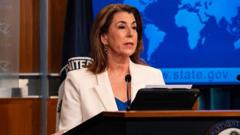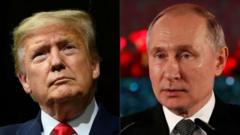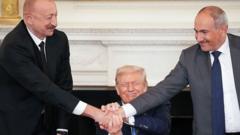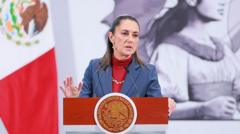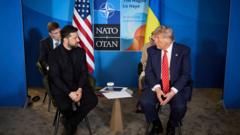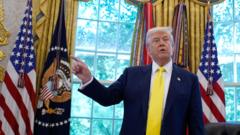As NATO prepares for its upcoming summit, its secretary general has suggested boosting defense spending from 2% to 5% of GDP, aiming to satisfy the U.S. and strengthen collective security.
NATO's Bold Move: Aiming for 5% Defense Spending to Woo Trump

NATO's Bold Move: Aiming for 5% Defense Spending to Woo Trump
In an effort to align European defense expenditures with expectations from the U.S., NATO proposes a significant increase in spending for member nations.
NATO is set to revisit its defense spending commitments as it approaches its next summit, with Secretary General Mark Rutte advocating for a substantial increase to meet the expectations of U.S. President Donald Trump. The objective is clear: prevent the backlash experienced in 2016 when Trump criticized European allies for their inadequate defense spending and reliance on American resources.
Rutte's proposal aims to raise NATO members' defense spending to 5% of their gross domestic product (GDP), significantly increasing the current benchmark of 2%. While this ambitious target is welcomed by Trump, it poses a challenging goal for many European nations already facing budgetary constraints. Some analysts speculate whether the push for higher spending is motivated primarily by a need to deter Russia or if it is primarily a political maneuver to appease Trump.
The outlined plan involves a structure where member nations would commit to a minimum defense expenditure of 3.5% of GDP, while the remaining 1.5% could be allocated to "defense-related expenditures." This broader categorization enables nations some leeway in how they approach their defense funding.
Rutte further mentioned that the U.S. would adhere to this new target, although for Washington, achieving it would be less of a concern given its current spending, which is already at about 3.4% of GDP. The critical aspect moving forward will be the effective implementation of these spending commitments, as nations will have about a decade to fulfill their obligations. There's currently no mechanism within NATO to penalize countries that fail to meet these targets.
During a press conference in Brussels, Rutte referenced his own experience in a country with previously unmet defense targets and expressed a resolve to hold political leaders accountable. His strategy includes requiring nations to submit yearly plans showing their incremental spending increases towards achieving the proposed 5% goal, avoiding sudden spikes toward the deadline, which he compared to a “hockey stick" growth curve.
Next week, Rutte is expected to visit the UK to discuss these defense commitments with Prime Minister Sir Keir Starmer. Under the current UK defense strategy, the country plans to allocate 2.5% of its GDP for defense by 2027, with aspirations to increase that figure to 3% in future parliamentary sessions.
U.S. Defense Secretary Pete Hegseth added that several countries—including France, Germany, and Poland—have already pledged to the 5% target, expressing confidence that others, including the UK, would soon follow suit. Hegseth emphasized the importance of achieving these spending goals for collective security.
Rutte's proposal aims to raise NATO members' defense spending to 5% of their gross domestic product (GDP), significantly increasing the current benchmark of 2%. While this ambitious target is welcomed by Trump, it poses a challenging goal for many European nations already facing budgetary constraints. Some analysts speculate whether the push for higher spending is motivated primarily by a need to deter Russia or if it is primarily a political maneuver to appease Trump.
The outlined plan involves a structure where member nations would commit to a minimum defense expenditure of 3.5% of GDP, while the remaining 1.5% could be allocated to "defense-related expenditures." This broader categorization enables nations some leeway in how they approach their defense funding.
Rutte further mentioned that the U.S. would adhere to this new target, although for Washington, achieving it would be less of a concern given its current spending, which is already at about 3.4% of GDP. The critical aspect moving forward will be the effective implementation of these spending commitments, as nations will have about a decade to fulfill their obligations. There's currently no mechanism within NATO to penalize countries that fail to meet these targets.
During a press conference in Brussels, Rutte referenced his own experience in a country with previously unmet defense targets and expressed a resolve to hold political leaders accountable. His strategy includes requiring nations to submit yearly plans showing their incremental spending increases towards achieving the proposed 5% goal, avoiding sudden spikes toward the deadline, which he compared to a “hockey stick" growth curve.
Next week, Rutte is expected to visit the UK to discuss these defense commitments with Prime Minister Sir Keir Starmer. Under the current UK defense strategy, the country plans to allocate 2.5% of its GDP for defense by 2027, with aspirations to increase that figure to 3% in future parliamentary sessions.
U.S. Defense Secretary Pete Hegseth added that several countries—including France, Germany, and Poland—have already pledged to the 5% target, expressing confidence that others, including the UK, would soon follow suit. Hegseth emphasized the importance of achieving these spending goals for collective security.






